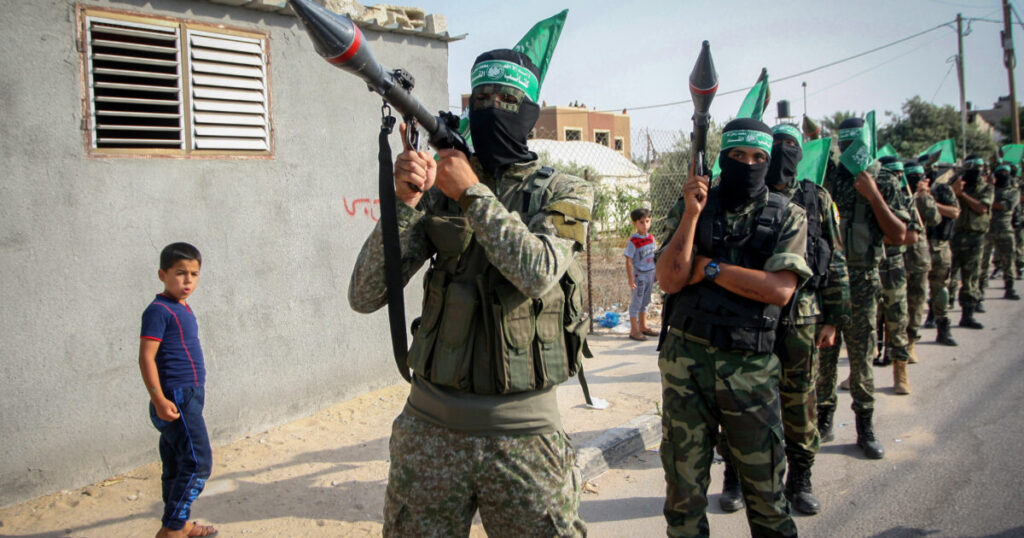The ongoing conflict between Israel and Hamas has reached a critical juncture, characterized by the hostage situation involving four Americans and a marked focus on military operations. On the 365th day of these hostilities, Israel asserts it has significantly impaired Hamas by targeting its leadership and reducing its operational capabilities. However, reports indicate that while Israeli forces have claimed the lives of 17,000 Hamas fighters, more credible estimates suggest the figure is around 8,500. Despite these substantial losses, Hamas is adapting its tactics, utilizing guerrilla warfare, explosives, and an extensive network of tunnels to maintain its military presence in Gaza and to escalate violence in the West Bank. This transformation in Hamas’s operational strategy reflects the group’s resilience in the face of adversity, with no sign of a ceasefire in the immediate future.
Despite the intensity of Israeli military operations in Gaza, Hamas remains a potent force in Palestinian resistance. The group has raised its activity level significantly in the West Bank, with a reported involvement in approximately 130 violent incidents over the past year, doubling from prior periods. This escalation indicates a strategic shift despite its diminished military state. Even as Israel continues to target Hamas’s infrastructure and leadership, the ambiguous outcome of the conflict, combined with a lack of effective communication and engagement from the Biden administration regarding hostage negotiations, points to a protracted struggle ahead.
Concurrently, Israel’s military actions extend to Hezbollah in Lebanon, where the Israeli Defense Forces (IDF) are increasing airstrikes in response to persistent rocket fire. The recent targeting of Hezbollah’s leadership, including a significant airstrike aimed at Hashem Safieddine, highlights the ongoing conflict’s dangers, especially with wider regional ramifications at stake. While the U.S. has pledged support for Israel, Vice President Kamala Harris’s announcement of financial support for Lebanon underscores the complexity of the humanitarian situation amid military confrontations. The UN’s call for hostage release and an end to violence reveals the international community’s growing concern about the escalating death toll and regional instability.
The IDF has initiated ground operations in Lebanon, a move prompted by missile attacks attributed to Iran. This development raises fears of a larger conflict across the region, underlining Israel’s intention to disrupt Hezbollah’s operational capabilities while simultaneously avoiding a full-scale war. The targeting of key figures within Hezbollah is part of a strategic approach aiming to weaken the group without igniting broader hostilities involving Iran, whose influence remains substantial in the region. The delicate balance of military action and preventive measures reflects Israel’s cautious approach towards an increasingly volatile security landscape.
As the conflict progresses, Lieutenant Colonel Gidi Harari, a military officer stationed near the Israeli-Lebanese border, provides insight into the local dynamics affected by ongoing hostilities. Residents’ choice to remain in their homes despite daily rocket and drone threats illustrates their resilience. Harari emphasizes the Israeli military’s focus on maintaining a presence along the northern border to reassure civilians, while also preparing for fluctuating battlefield conditions, particularly impacted by weather. This localized perspective on the broader conflict reveals the intertwined nature of military strategy and societal impact during prolonged warfare.
In conclusion, as the confrontation continues unabated, the complex interplay between Hamas, Hezbollah, Iran, and the U.S. foreshadows an enduring cycle of violence. The situation is marked by escalations in military tactics, continuous violence in both Gaza and the West Bank, and significant geopolitical implications, particularly for U.S. foreign policy. The prospects for de-escalation appear slim, with both Israel and its adversaries entrenched in their positions. The necessity for a strategic pivot, focusing on diplomatic solutions amidst the ongoing crises, remains critical for any hope of resolution in this multifaceted and deeply entrenched conflict.

